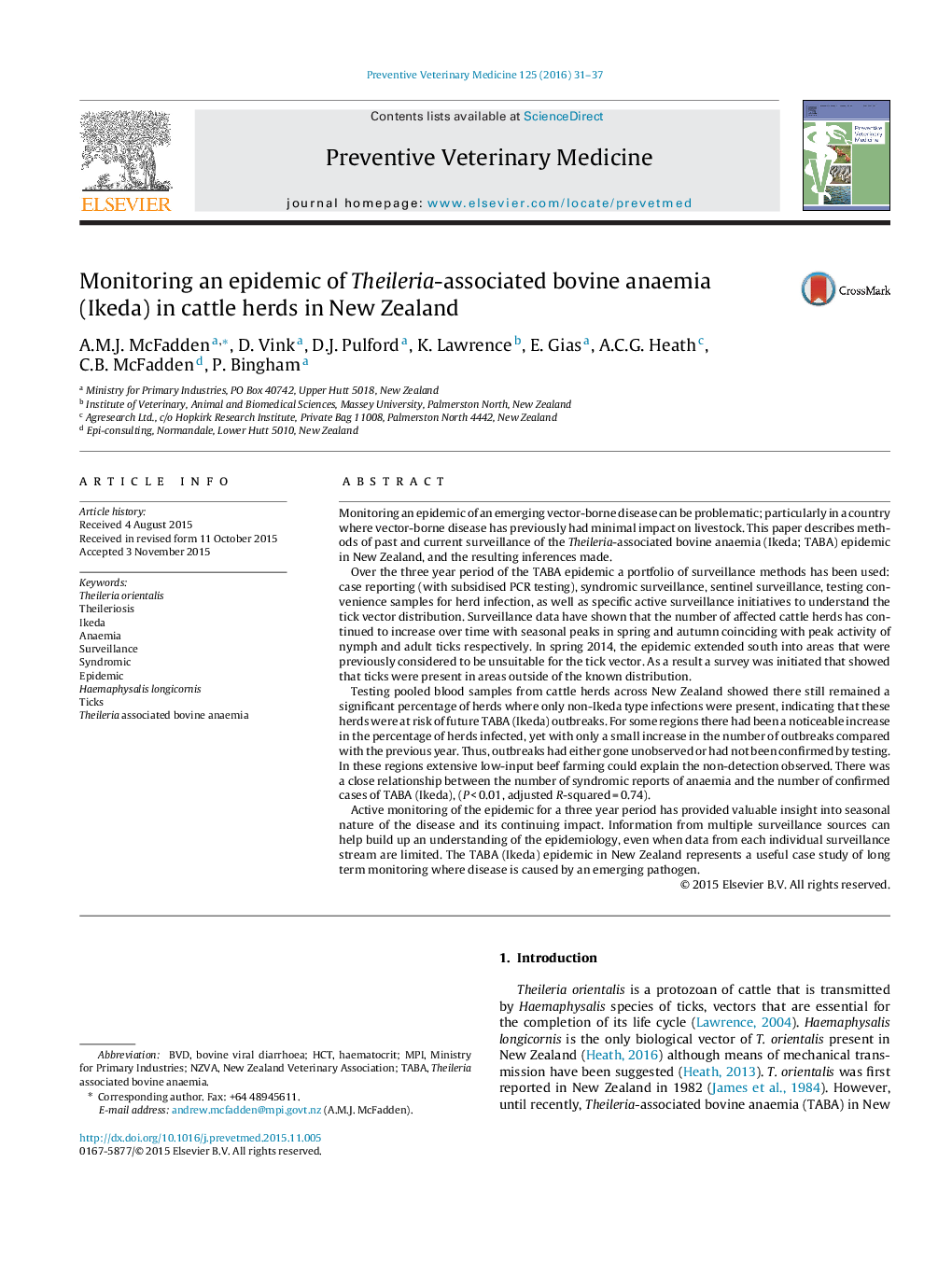| کد مقاله | کد نشریه | سال انتشار | مقاله انگلیسی | نسخه تمام متن |
|---|---|---|---|---|
| 5792991 | 1554163 | 2016 | 7 صفحه PDF | دانلود رایگان |
- Theileria-associated bovine anaemia (Ikeda) is an emerging syndrome.
- There were peaks in the number of affected cattle herds in spring and autumn.
- Surveillance from multiple sources has helped understanding of the epidemiology.
Monitoring an epidemic of an emerging vector-borne disease can be problematic; particularly in a country where vector-borne disease has previously had minimal impact on livestock. This paper describes methods of past and current surveillance of the Theileria-associated bovine anaemia (Ikeda; TABA) epidemic in New Zealand, and the resulting inferences made.Over the three year period of the TABA epidemic a portfolio of surveillance methods has been used: case reporting (with subsidised PCR testing), syndromic surveillance, sentinel surveillance, testing convenience samples for herd infection, as well as specific active surveillance initiatives to understand the tick vector distribution. Surveillance data have shown that the number of affected cattle herds has continued to increase over time with seasonal peaks in spring and autumn coinciding with peak activity of nymph and adult ticks respectively. In spring 2014, the epidemic extended south into areas that were previously considered to be unsuitable for the tick vector. As a result a survey was initiated that showed that ticks were present in areas outside of the known distribution.Testing pooled blood samples from cattle herds across New Zealand showed there still remained a significant percentage of herds where only non-Ikeda type infections were present, indicating that these herds were at risk of future TABA (Ikeda) outbreaks. For some regions there had been a noticeable increase in the percentage of herds infected, yet with only a small increase in the number of outbreaks compared with the previous year. Thus, outbreaks had either gone unobserved or had not been confirmed by testing. In these regions extensive low-input beef farming could explain the non-detection observed. There was a close relationship between the number of syndromic reports of anaemia and the number of confirmed cases of TABA (Ikeda), (P < 0.01, adjusted R-squared = 0.74).Active monitoring of the epidemic for a three year period has provided valuable insight into seasonal nature of the disease and its continuing impact. Information from multiple surveillance sources can help build up an understanding of the epidemiology, even when data from each individual surveillance stream are limited. The TABA (Ikeda) epidemic in New Zealand represents a useful case study of long term monitoring where disease is caused by an emerging pathogen.
Journal: Preventive Veterinary Medicine - Volume 125, 1 March 2016, Pages 31-37
